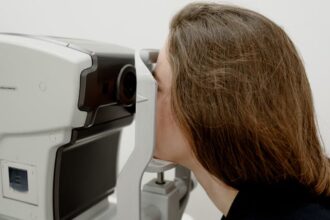A major new study has provided fresh insight into the connection between physical frailty and dementia, suggesting that frailty may not only be associated with, but could also contribute directly to, the development of the disease. The findings were published on September 17, 2025, in Neurology®, the medical journal of the American Academy of Neurology. This large-scale investigation strengthens the case for understanding frailty as more than a sign of general health decline and positions it as a possible risk factor for dementia itself.
Frailty, in medical terms, was defined in the study as the presence of at least three out of five key symptoms: persistent tiredness, low physical activity, slower walking speed, reduced grip strength, and unintended weight loss. These indicators have long been recognised as markers of physical decline, but the research team sought to explore whether they might also be linked to long-term cognitive changes. “We have known that frailty is tied to a higher risk of dementia,” explained lead author Yacong Bo, PhD, of Zhengzhou University in China. “Our study provides evidence that frailty may actually be a cause, though it is still possible that frailty represents early changes in the disease process.”
The research drew on health data from an impressive cohort of 489,573 participants, with an average age of 57, who were followed for approximately 14 years. Among these individuals, 4.6% were classified as frail, 43.9% fell into the “pre-frailty” category with one or two symptoms, and just over half—51.5%—showed no symptoms and were deemed not frail. Over the course of the study, 8,900 people went on to develop dementia. The rates varied noticeably by frailty status: 4.6% among the frail group, 2.2% among the pre-frail, and 1.3% among those with no frailty symptoms.
When the researchers accounted for other factors that influence dementia risk, such as age, education level, and physical activity, they found striking differences. Those classified as frail were nearly three times more likely to develop dementia than those without any symptoms. Pre-frailty also carried a significant risk, with affected individuals showing a 50% higher likelihood of developing dementia compared to their non-frail peers. Genetic factors added further weight: people who were frail and also carried dementia-related genes faced nearly four times the risk of dementia compared with those who had neither frailty nor genetic predisposition.
Notably, the data suggested that frailty may play a causal role rather than being a by-product of dementia. The researchers examined brain imaging and biological markers, discovering that frail participants were more likely to show structural brain changes linked to dementia. “These biomarkers may be the mechanism that connects frailty to dementia,” noted Bo. At the same time, the reverse relationship appeared weak, with evidence showing dementia did not significantly increase the likelihood of becoming frail.
The study highlights the importance of recognising and addressing frailty as a potential avenue for dementia prevention. Early identification of frailty, along with interventions that promote physical activity, adequate nutrition, and muscle strength, serves a dual purpose: protecting physical function and safeguarding brain health. The authors acknowledge some limitations, particularly that four of the five frailty symptoms were self-reported and could be subject to inaccuracies. Nevertheless, the findings lend significant weight to the growing body of evidence that maintaining physical resilience is essential for cognitive well-being in later life.
More information: Yacong Bo et al, Association of Frailty With Dementia and the Mediating Role of Brain Structure and Immunometabolic Signatures, Neurology. DOI: 10.1212/WNL.0000000000214199
Journal information: Neurology Provided by American Academy of Neurology








